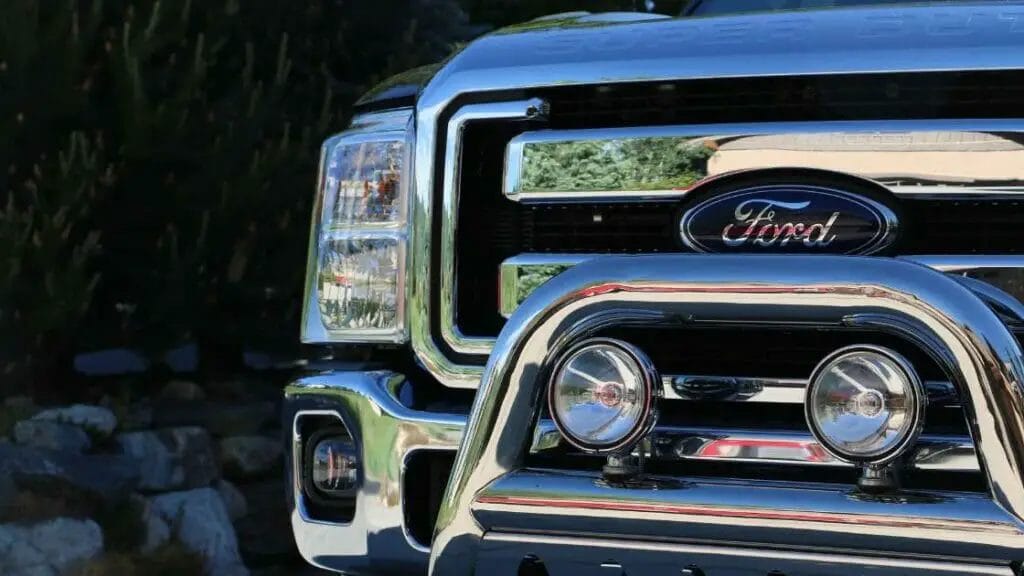No matter how much you favor Ford F150 and has become a loyal follower, you can’t help but be upset when you experience firsthand the flaws that come with it, especially the popping noise it produces when turning.

This noise can be both frustrating and worrisome, but rest assured, it is a problem that can be fixed.
In this article, we will cover the reasons why Ford F150 makes a popping noise when turning, how to diagnose the cause, and how to fix it. We will also be providing tips on how to prevent this popping noise in the future.

Understanding the popping noise when turning
Before we delve into the possible causes and solutions for the popping noise, it is important to understand what causes it in the first place.
The popping noise typically occurs when you make a turn, whether it’s a sharp turn or a gradual one. It may sound like a loud popping noise or a series of clicks.
This noise can come from the front or rear of the vehicle, and it can be more pronounced when the vehicle is cold or has been sitting for a while.
Possible causes of the popping noise
There are several possible causes for the popping noise when turning your Ford F150.
One common cause is worn-out ball joints.
The ball joints are responsible for connecting the steering knuckles to the control arms, allowing for smooth and controlled movement.
Over time, the ball joints can wear out, resulting in a popping noise when turning.
Another possible cause is worn-out tie rod ends.
The tie rod ends are crucial components that connect the steering gear to the wheel hubs. When these components wear out, they can cause a popping noise when turning.
Additionally, worn-out sway bar links or bushings can also be a culprit.
The sway bar, also known as the stabilizer bar, helps to stabilize the vehicle during turns. If the sway bar links or bushings are worn out, they can cause a popping noise.
How to diagnose the popping noise
Diagnosing the cause of the popping noise when turning your Ford F150 can be a bit of a challenge, especially if you’re not familiar with the inner workings of your vehicle.
However, there are a few things you can do to narrow down the possible causes.
First, inspect the ball joints, tie rod ends, and sway bar links for any signs of wear or damage. Look for excessive play or movement in these components.
If you notice any issues, it’s likely that the worn-out component is the cause of the popping noise.
You can also try bouncing the front or rear of the vehicle to see if you can replicate the noise.
If the popping noise occurs when you bounce the vehicle, it’s a good indication that the issue lies with one of these components.
Tips for preventing the popping noise
Prevention is always better than cure, and there are a few things you can do to prevent the popping noise from occurring in the first place.
- Regularly inspecting and maintaining the ball joints, tie rod ends, and sway bar links is essential. Look for any signs of wear or damage and replace any worn-out components promptly.
- Drive with care and avoid rough terrain to prolong the lifespan of your car components. Sharp turns and rough roads can put additional stress on the suspension system, leading to premature wear and tear.
Steps to fix the popping noise
If you’ve diagnosed the cause of the popping noise and determined that it is due to worn-out ball joints, tie rod ends, or sway bar links, you can take steps to fix the issue yourself.
However, it’s important to note that working on the suspension system can be complex and may require special tools. If you’re not comfortable or experienced in working on vehicles, it’s best to leave the job to a professional.
If you do decide to tackle the repair yourself, start by jacking up the vehicle and securing it with jack stands.
Remove the wheel and inspect the worn-out component.
Depending on the specific issue, you may need to replace the ball joints, tie rod ends, or sway bar links.
Follow the manufacturer’s instructions and use the appropriate tools to complete the repair.

When to seek professional help
While some DIY enthusiasts may be able to tackle the repair themselves, it’s important to know when to seek professional help.
If you’re not confident in your abilities or don’t have the necessary tools, it’s best to leave the job to a qualified mechanic.
A professional mechanic will have the knowledge, experience, and tools to diagnose and repair the issue correctly.
They can ensure that all necessary components are replaced and that the repair is done to the highest standard.
Other potential issues with the Ford F150
While the popping noise when turning is a common issue with the Ford F150, it’s worth noting that it’s not the only problem that owners may encounter. Like any vehicle, the Ford F150 can experience a range of issues, from transmission problems to electrical gremlins.
Regular maintenance, including oil changes, fluid checks, and tire rotations, can help prevent these issues from occurring.
Additionally, it’s important to address any warning signs promptly and seek professional help if needed.
